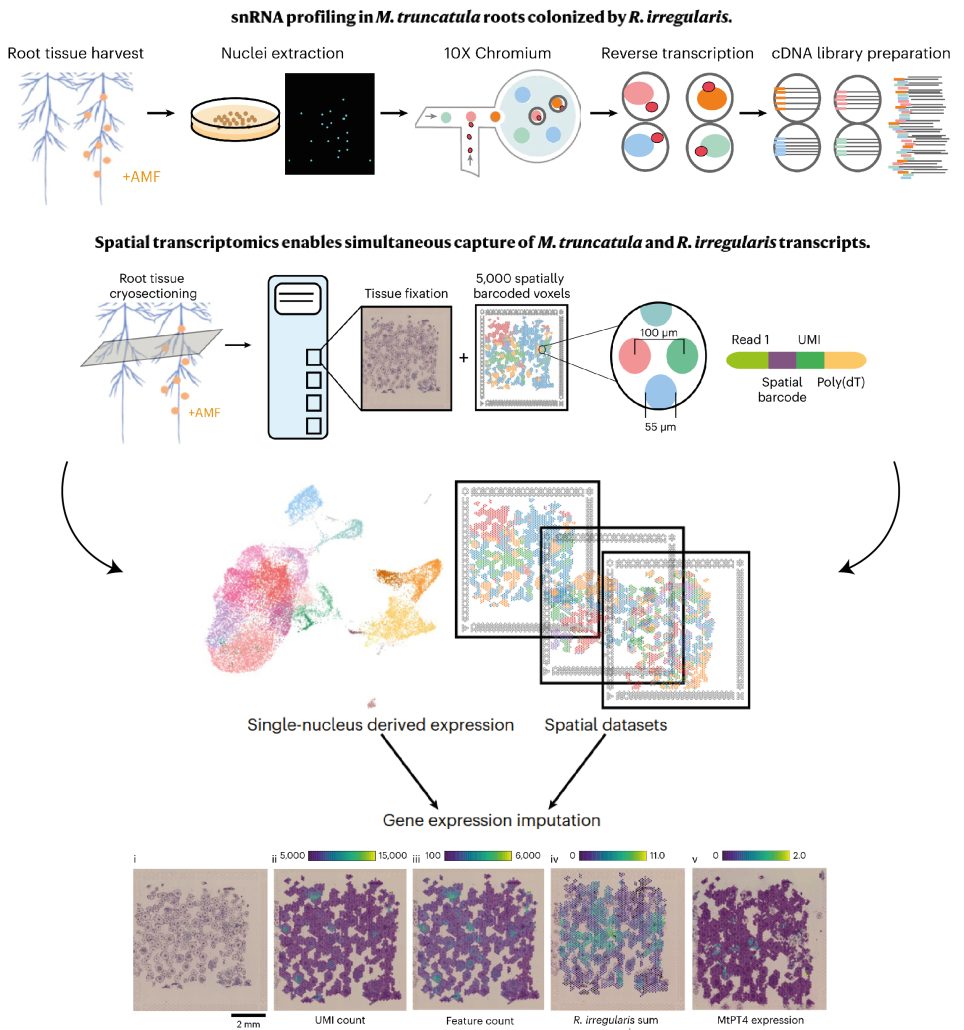
Spatial co-transcriptomics reveals discrete stages of the arbuscular mycorrhizal symbiosis
Plant Science Research WeeklyIn recent years, single-cell RNA sequencing (scRNA-seq) and single-nuclei RNA sequencing (snRNA-seq) techniques have revolutionized plant biology by enabling the identification of novel cell types, modeling developmental trajectories, and analyzing transcriptional activity at the cellular level. However,…
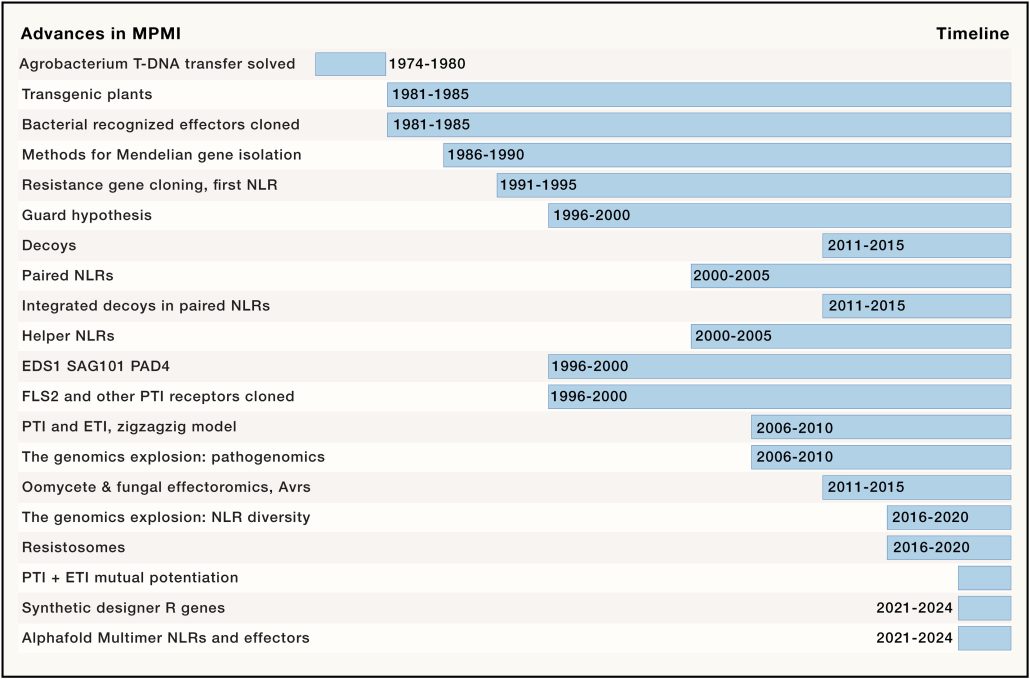
Review: The plant immune system: From discovery to deployment
Plant Science Research WeeklyA review of the past 50 years of plant immunity by Jones, Staskawicz, and Dangl? Yes please! I particularly enjoy historical perspectives of a discipline, as they frame conceptual breakthroughs with the benefit of hindsight. As the article lays out, understanding the plant immune system benefitted greatly…
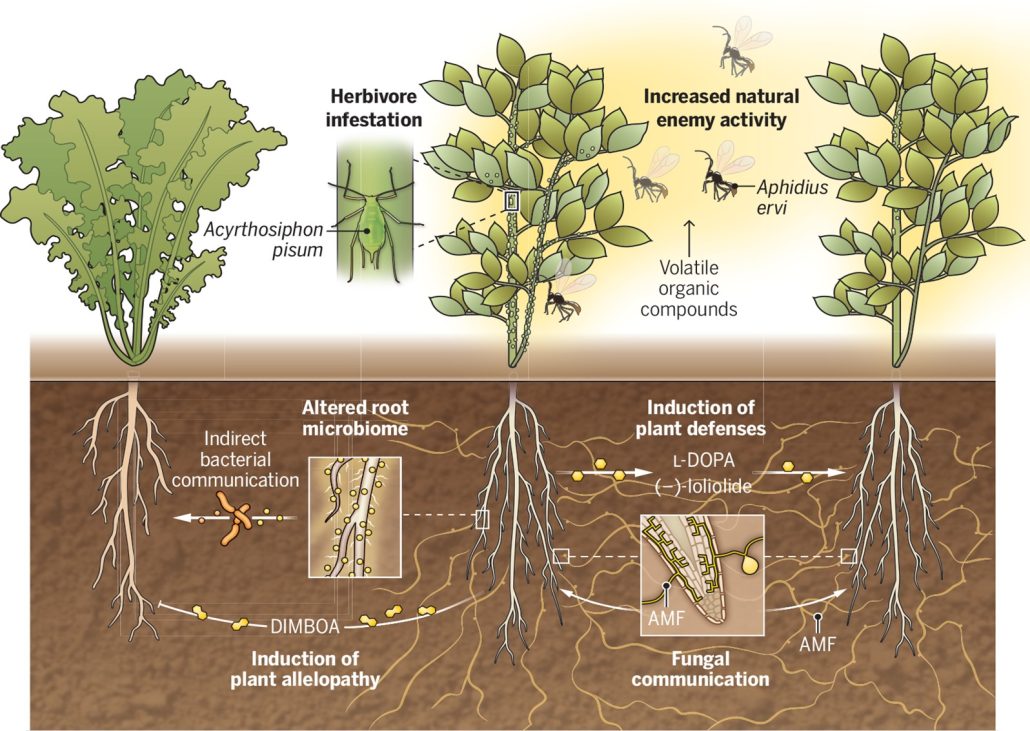
Perspective: Exposing belowground plant communication
Plant Science Research WeeklyPlants possess a fascinating ability to communicate with each other through a complex system of chemical signals. Aboveground, they use airborne volatile signals to attract predatory insects, prime defenses in neighbors, facilitate nutrient transfer, and promote plant interactions. However, less is known…
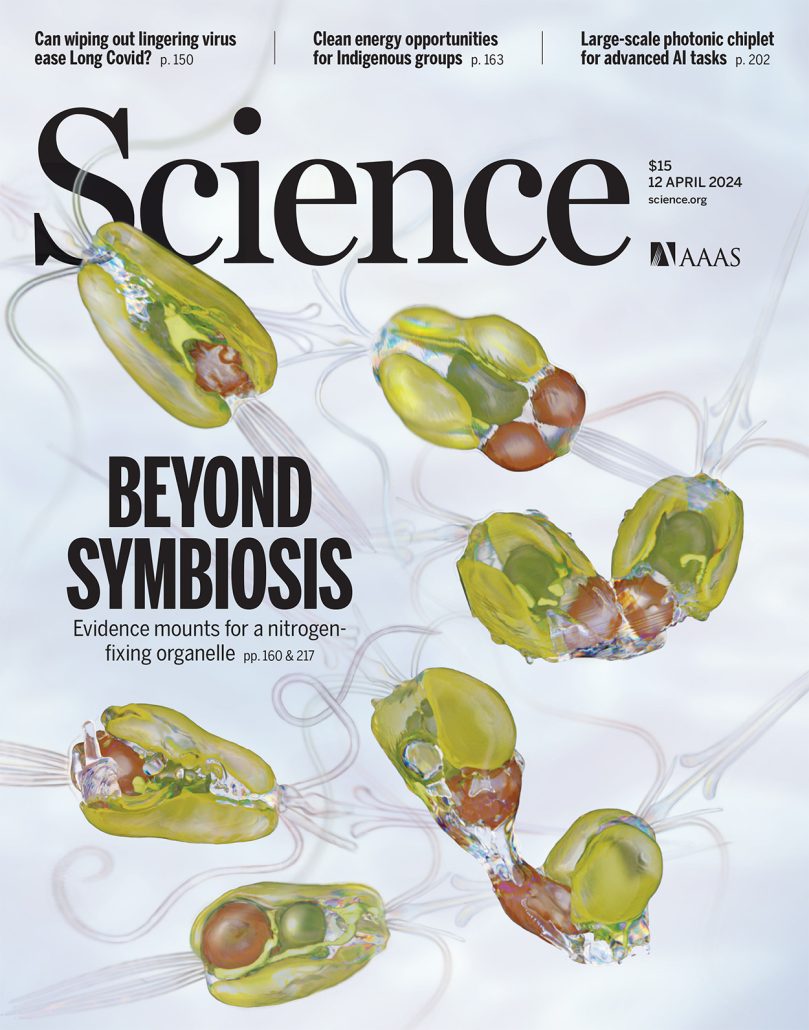
A nitrogen-fixing algal organelle
Plant Science Research Weekly
Coale et al. provide an exciting peek into the evolution of a nitrogen-fixing organelle (called a nitroplast) in their studies of a tiny marine alga, Braarudosphaera bigelowii and its endosymbiont cyanobacterium, Candidatus Atelocyanobacterium thalassa (UCYN-A). Plant biologists are familiar with…
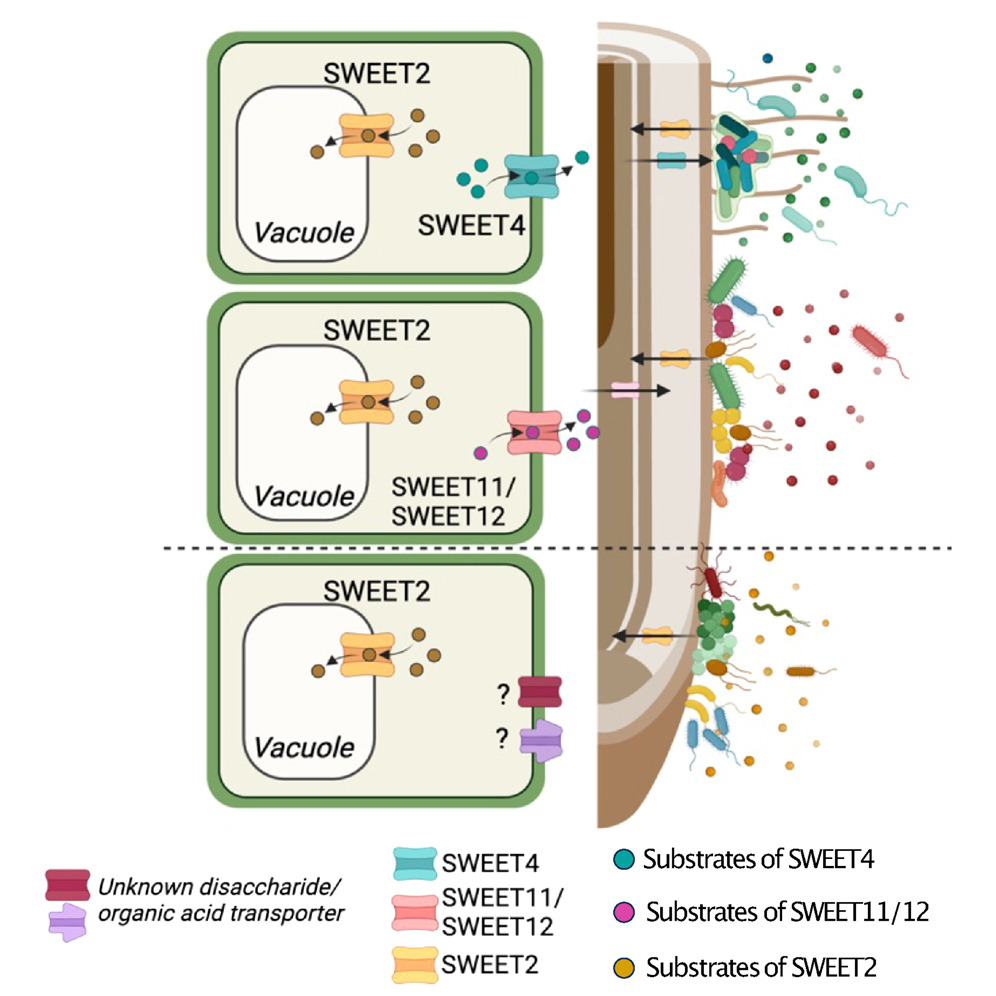
SWEET sugar transporters orchestrate distribution of microbiota along the root longitudinal axis
Plant Science Research WeeklyPlant roots are functionally distinct along the longitudinal axis due to different cell types and diverse metabolic states. Root-secreted metabolites are involved in the assembly of complex microbial communities, yet the relationships between root-metabolites and organization of root microbiota at the…
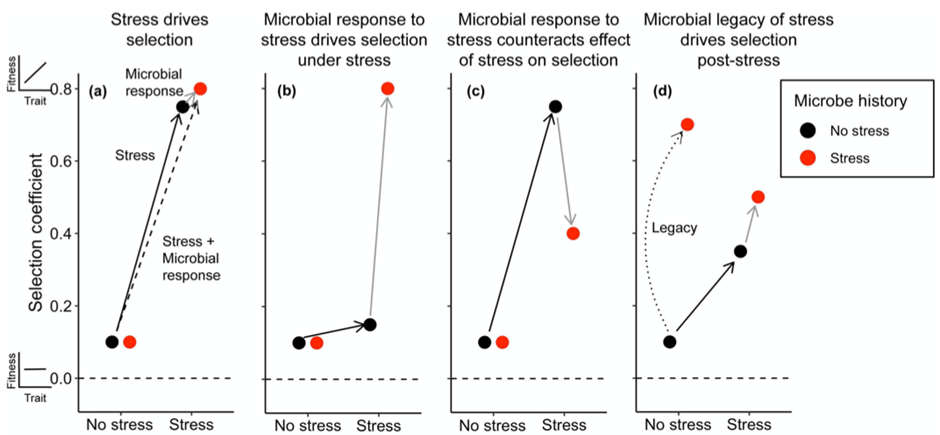
Hidden influence: How microbial stress responses shape plant natural selection
Plant Science Research WeeklySoil microbial communities respond rapidly to stress, potentially leading to altered compositions in stressful environments and consequently impacting plant natural selection. Bolin and Lau investigated the influence of microbial responses to stress and persistent microbial legacy effects on plant selection.…

Herbivore-deterring trichomes persist with the help of Woolly and Get02
Plant Science Research WeeklyType-IV glandular trichomes, which produce acylsugars, are effective deterrents against herbivory in Solanum, but they only persist in the juvenile stage of the cultivated tomato (S. lycopersicum). Therefore, these trichomes serve as a marker for the transition from juvenile to adult phases in developmental…

Review: Integrative framework for successful deployment of microbiomes in agriculture
Plant Science Research WeeklyThis review by Berruto and Demirer calls for an interdisciplinary approach at the interface of experimental and computational frameworks to address the long-standing challenge of field application of beneficial soil microbiomes. This challenge persists due to our limited understanding of the complex…
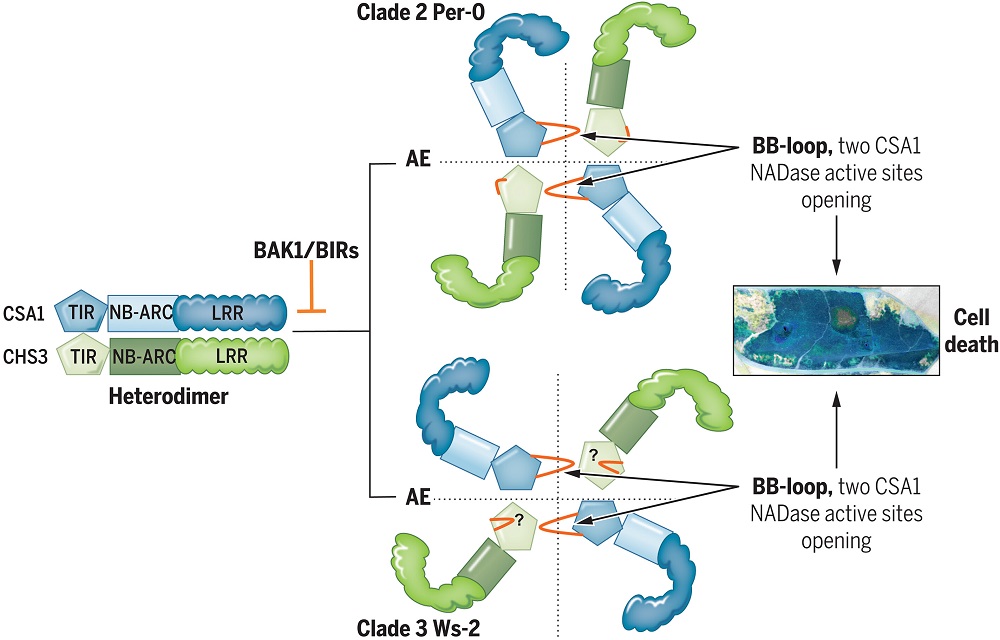
Every pair is special!
Plant Science Research WeeklyThe identification and characterization of resistosome complexes, formed by the oligomerization of intracellular nucleotide-binding leucine-rich repeat receptors (NLRs), has recently been a major focus in the field of plant immunity. Some NLR genes occur as head-to-head pairs encoding proteins that function…

